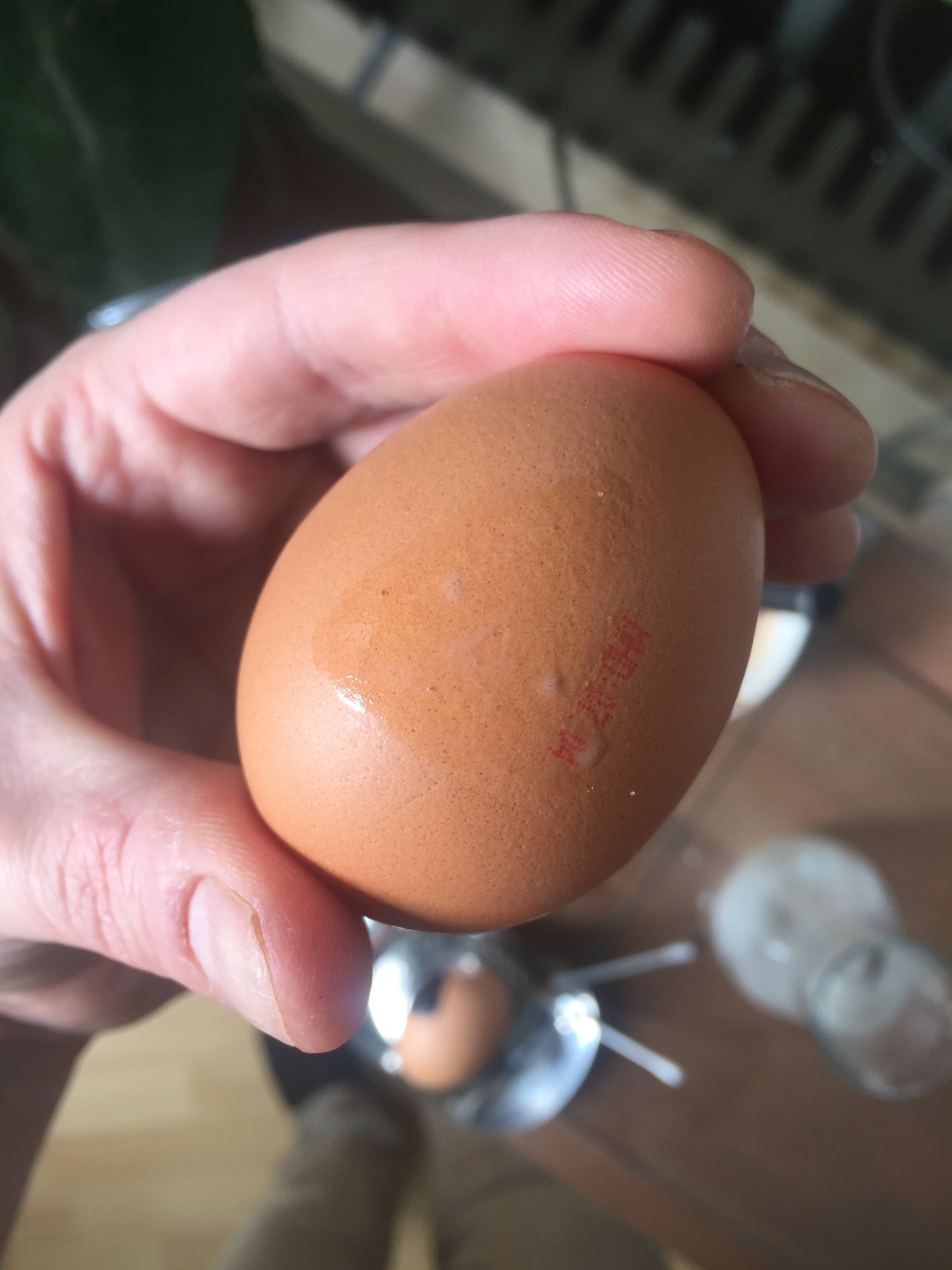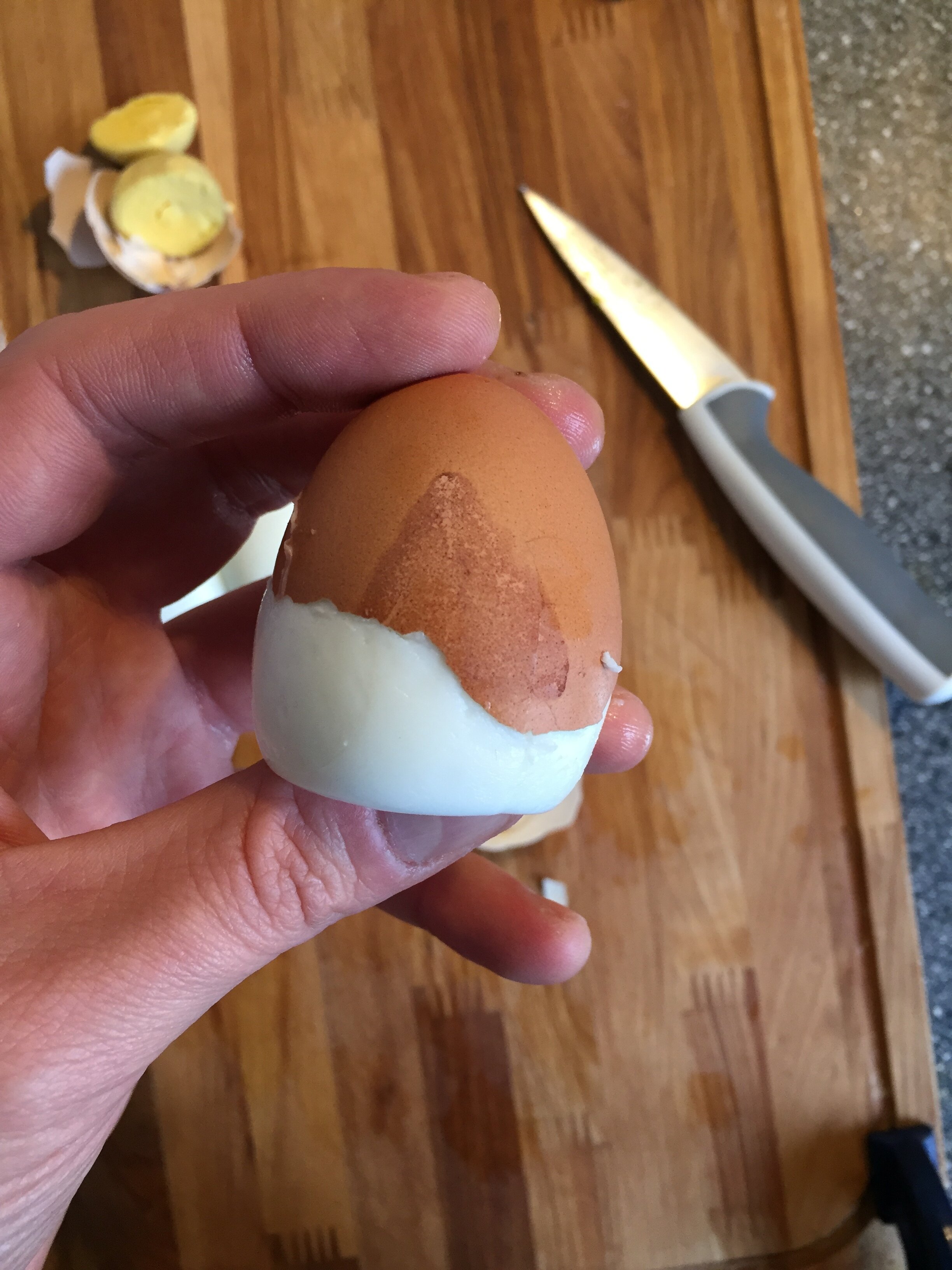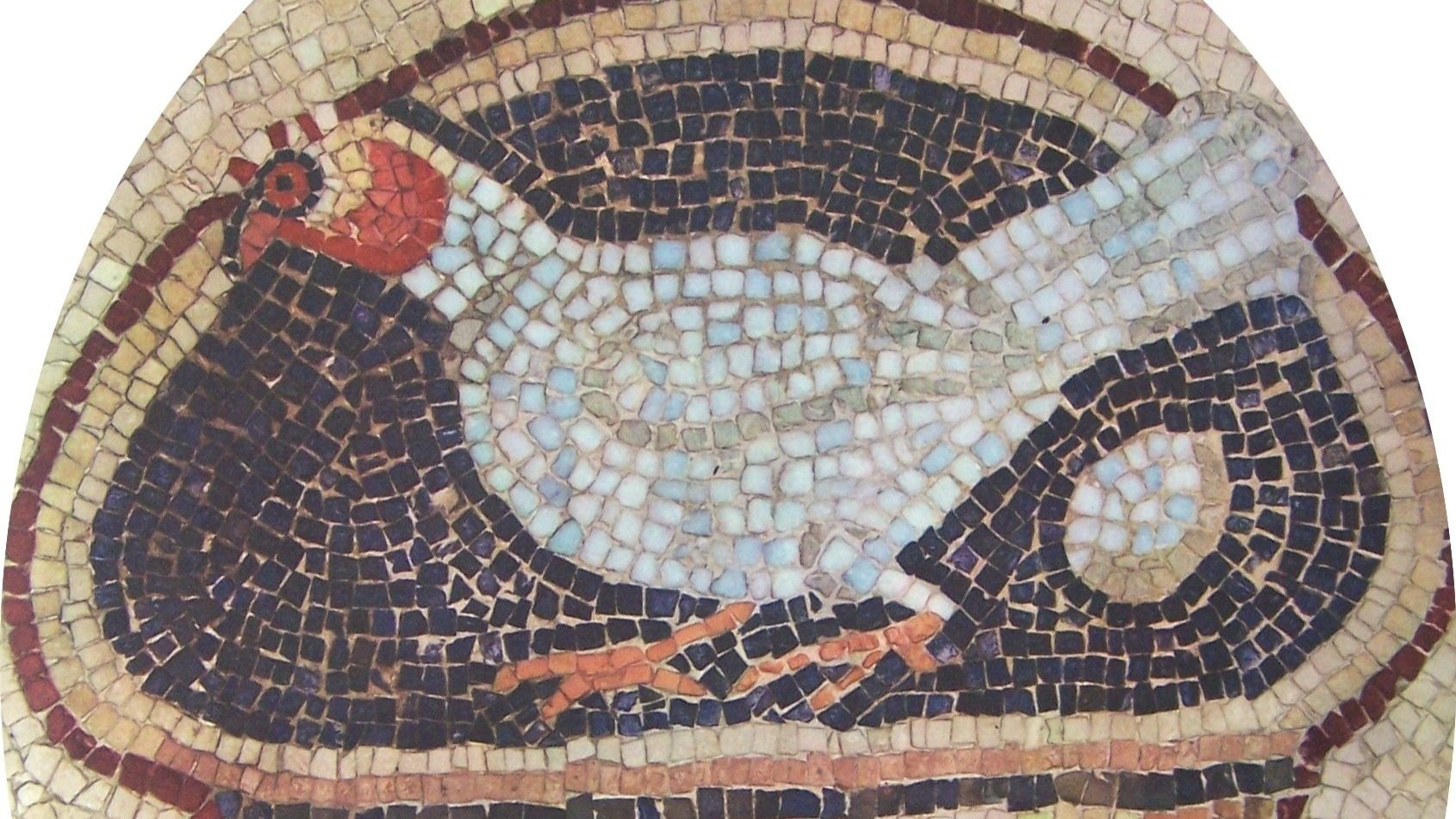Eggs and Invisible Ink
How did Giambattista della Porta end up being associated with an ancient way of hiding secret messages inside of boiled eggs?
I recently stumbled across a trick for hiding secret messages inside of eggs. It’s in the 10th-century compendium known as the Geoponica or Farm Work:
“To make inscriptions on eggs. From Africanus. Grind up oak gall and alum with vinegar until it reaches the thickness of black ink. Use it to write whatever you want on the egg. Once the writing has dried in the sun, place the egg into a sharp brine. Once it has dried, boil it, and when you have peeled it, you will find the inscription.”
Ὠὰ κατάγραπτα ποιῆσαι. Ἀφρικανοῦ. Κικίδος καὶ στυπτηρίας μετὰ ὄξους τρίψας, ἕως γένηται πάχος μέλανος, ἐπίγραψον ἐξ αὐτοῦ ὃ θέλεις τῷ ὠῷ, καὶ ψυγείσης τῆς γραφῆς ἐν ἡλίῳ κατάθες τὸ ὠὸν εἰς ἅλμην δριμεῖαν, καὶ ψύξας ἕψησον, καὶ λεπίσας εὑρήσεις τὴν ἐπιγραφήν.
Geoponica 14.10 (roughly 10th century, originally 3rd century CE)
The compiler of the Geoponica attributes the recipe to someone named Africanus. Scholars typically identify him with Julius Africanus, a Libyan philosopher of the second and third century CE. Africanus was a Christian (before it was popular), spent time in and around Judaea and Rome, exchanged letters with Origen, and wrote a book called Kestoi—an encyclopedic mix of rhetoric, natural philosophy and what he called ‘forbidden investigations’ (ἱστορίαι ἀπόρρητοι).
From the Kestoi (if that’s where it originally was) the recipe would have found its way into a country-knowledge Compendium of Farming Practices (Συναγωγὴ γεωργικῶν ἐπιτηδευμάτων) by Vindonius Anatolius sometime in the 4th century CE; and from there into a 6th-century work called Selections on Farming (περὶ γεωργίας ἐκλογαί) compiled by Cassianus Bassus, now lost, but which was a major source for the Geoponica. That’s the standard story anyway.
But if you try to find anything about Africanus’ recipe on the internet, you’ll notice three things: first, no one can get it to work; second; it’s nearly always missing one of its ingredients, namely oak gall; and third, it’s never attributed to Africanus, but to Giambattista della Porta, the 16th century Italian polymath and author of the Magia Naturalis or Natural Magic.
The story associating della Porta with the recipe usually goes something like this: Giambattista della Porta (or Giovanni Porta in some versions) and his friends were having trouble with the Church and they needed a way to get messages to those of them imprisoned by the Inquisition. To do this, della Porta invented a technique for writing messages where no one would ever expect: on the inside of hardboiled eggs. Here are a few re-tellings: 1, 2, 3, 4.
The story is popular enough that it even made it into della Porta’s Wikipedia page.
From the English Wikipedia entry for Giambattista della Porta, 27 March 2021.
Now, the story isn’t completely wrong. In chapter four of book sixteen of the Magia Naturalis, della Porta does write about secret messages in eggs. And at the beginning of the chapter, he writes:
“…eggs are not stopped by the Papal Inquisition and no fraud is suspected to be in them…”
…pontificalium suffragiorium comittiis ova non incipiuntur nec aliquid fraudis in eis suspicatur…
della Porta, Magia Naturalis 16.4 (Latin 1590, English 1658).
So, the inquisition thing is pretty much right, although whether he’s being serious is an open question.
A quick check of the chapter, however, reveals one big difference: della Porta does not take credit for the recipe. He attributes it to Africanus. Even more importantly he says he couldn’t get it to work:
“Africanus teaches thus: ‘grind oak galls and alum with vinegar, until they have the viscosity of ink. With it, inscribe whatever your want on the egg and once the writing has been dried by the sun, place the egg in sharp brine, and having dried it, cook it, peel, and you will find the inscription.’ I put it in vinegar and nothing happened, unless by ‘brine’, he meant sharp lye, what’s normally called capitellum*.”
Africanus ita docet. Gallas et alumen cum aceto terito, donec atramenti spissitudinem habeant, ex hoc quicquid libuerit ouo inscribito, et postquam scriptum Sole desiccatum fuerit, ouum in muriam acrem demittito, et resiccatum coquito, et decorticato, et reperies inscriptionem. Ego in acetum imposui, et nihil evenit, si per muriam non intelligat acre lixiviu, vulgo capitello dictum.**
della Porta, Magia Naturalis 16.4 (Latin 1590, English 1658)
*capitellum: a mixture of quicklime and oak ashes. See Magia Naturalis 9.3 where it is used in a black hair dye (English).
**Della Porta’s text is nearly a word for word translation of the Greek from the Geoponica, and it is also similar, but not identical, to Cornarius’ 1538 Latin translation.
Despite his failure in replicating it, della Porta found Africanus’ recipe tempting enough that he devised another method to try to get it to work. This one is almost never found online, so I’ll append it at the end. To summarize, he says one should first boil the egg, coat it in wax, and then inscribe the message in the wax through to the shell (like when doing etching); next, he says to put the egg in a solution of alum and gall (for how long is unclear), followed by a solution of sharp vinegar (again unclear), after which the egg is dried and the shell removed to find the message in saffron-coloured writing (and even this technique resembles another attributed to Africanus in the Geoponica).
I began to wonder how the mistaken attribution first came about, so I clicked on the footnote at the end of the story on Wikipedia, assuming I’d find something. And I did find something, just not what I expected.
Oak galls. Easter 2021.
The footnote pointed to page 227 of a 2015 book called Philalethe Reveal'd Vol. 2 B/W, the text of which was almost identical to the Wikipedia story and didn’t include any references. I checked other languages to see if I could find better sources. I checked French, Italian, Spanish and German versions of the article, but the story didn’t show up in any other languages at all.
This made me even more confused. Surely this story didn’t just appear in a 2015 book. And why was it only in English?
Wikipedia is great because it preserves the entire edit history for every article on the site. I wanted to find out when the story about the egg was added to see if it might give me some clues to other possible sources.
The story turns out to have been added on 23 December 2012—three years before the book in the footnote was published. But whoever it was who added the story (looks to have been someone interested in British art and museum collections in London) didn’t give a reference.
It was orphaned until 2015, when someone made a note that it needed a citation; the request remained unfulfilled until February 2017, when the reference to the 2015 book was added.
That meant the story was on Wikipedia for five years before the reference was added—long enough for this beautiful example of circular referencing to appear: the book, Philalethe Reveal’d (ironic) copied the story from the Wiki, was published, and was then cited as an authority for the Wikipedia story it nicked. It also meant this trail had come to an end.
I had to start from somewhere else; and since many of the websites I looked into besides Wikipedia mentioned a 2014 book on invisible inks by Kristie Macrakis, a professor at Georgia Tech, I started from there.
Macrakis’ version of the story resembles the Wikipedia version, but with a bit more flair. The book also came out two years after the story appeared in the Wiki, so Macrakis’ version could have been a descendent. I think, however, there’s reason to think that her version and the Wiki one are more distantly related. While both versions of the recipe leave ingredients out, they leave out different ingredients. The Wiki leaves out vinegar. Macrakis leaves out oak gall.
As some people on the internet have pointed out, it’s hard to understand how this recipe could work without a pigment (here’s a comment from a thread on reddit; and here’s a post by Craig Matsuoka in a magician’s forum, which was also published in the October 2002 volume of Genii magazine—Matsuoka and his interlocutor Stephen Minch correctly point out that della Porta is debunking Africanus, although they don’t follow it up). I think this insight is more likely to have been inspired by reading the Wiki (or its ancestor) than by reading della Porta, but it seems right. Alum on its own wouldn’t stain anything.
At any rate, it’s not much of a surprise that Macrakis and colour chemist Jason Lye report they couldn’t get the recipe to work. In an appendix (page 311), she appeals to anyone who’s gotten it to work to get in touch with them. On her website she also offers a $200 prize to anyone who can replicate it (Jason Lye also posted a video of one attempt).
I did find someone who mentioned a video on the internet purporting to do the trick with just alum and vinegar. I managed to find a creepy video from 2007—a pretty early date—which I think is the one. If it’s authentic, well, cool. But it’s likely a clever fake.
Old ways to play with your food. New York Times, 29 May 1965, page 14.
Macrakis however gives an even earlier source for the vinegar and alum recipe, well before Wikipedia: a New York Times article from 1965, in which it’s reported that the United States Department of Agriculture recommends parents encourage their kids to eat more eggs by teaching them to write secret messages on the inside using a ‘magic ink’ made of vinegar and alum.
No doubt building on the popularity of ‘60s spy toys, they told kids to mix one ounce of alum with one cup of vinegar, then use the colorless magic ink to write a message on the shell of an uncooked egg. Once it was dry, one only had to boil the egg for 15 minutes, and—so the USDA promised—whatever secret was written on the shell would show up inside on the white of the boiled egg.
I have found a few leads that may be the USDA’s ultimate source, some dating back to the turn of the 20th century, and I’m sure there are others as well. All of these sources are missing the oak gall and none of them mention della Porta. How the one dropped out and the other dropped in is still a mystery…
For now, here are Africanus’ and della Porta’s recipes for writing messages in eggs. I also tried to reproduce Africanus’ version, with and without oak gall (well, a tannin anyway). It didn’t work.
Julius Africanus’ recipe for leaving a secret message in an egg
“To make inscriptions on eggs. From Africanus.
“Grind up oak gall and alum with vinegar until it reaches the thickness of black ink. Use it to write whatever you want on the egg. Once the writing has dried in the sun, place the egg into a sharp brine. Once it has dried, boil it, and when you have peeled it, you will find the inscription.
“If you coat the egg all over with wax and inscribe it until the shell appears through the letters, then leave it to soak in vinegar overnight, on the next day, after removing the wax, you will find that the vinegar has made the outline of the letters transparent.”
Ὠὰ κατάγραπτα ποιῆσαι. Ἀφρικανοῦ.
Κικίδος καὶ στυπτηρίας μετὰ ὄξους τρίψας, ἕως γένηται πάχος μέλανος, ἐπίγραψον ἐξ αὐτοῦ ὃ θέλεις τῷ ὠῷ, καὶ ψυγείσης τῆς γραφῆς ἐν ἡλίῳ κατάθες τὸ ὠὸν εἰς ἅλμην δριμεῖαν, καὶ ψύξας ἕψησον, καὶ λεπίσας εὑρήσεις τὴν ἐπιγραφήν. Εἰ δὲ κηρῷ περιπλάσας τὸ ὠὸν ἐπιγράψεις ἄχρις ἂν φανῇ τὸ ἔλυτρον τοῖς γράμμασιν, εἶτα ἐάσεις ὄξει βρέχεσθαι τὴν νύκτα, τῇ ἑξῆς περιελὼν τὸν κηρόν, εὑρήσεις τῶν γραμμάτων τὸν τύπον ὑπὸ τοῦ ὄξους γενόμενον διαφανῆ.
Geoponica 14.10 (roughly 10th century, recipe originally 3rd century CE, probably)
Giambattista della Porta’s recipe for leaving a secret message in an egg
“If you want to make yellow letters appear on an egg white (it will work better when the egg is cooked): Boil an egg hard, roll it in wax, and engrave the letters on the wax with an iron point so that the marks go through. Place it into a solution of powdered alum and oak galls. Then put it into sharp vinegar and they will penetrate. And taking off the shell, you will see them on the white of the egg. Africanus instructs as follows: ‘grind oak galls and alum with vinegar, until they have the viscosity of ink. With it, inscribe whatever your want on the egg and once the writing has been dried by the sun, place the egg in sharp brine, and having dried it, cook it, peel, and you will find the inscription.’ I put it in vinegar and nothing happened, unless by ‘brine’, he meant sharp lye, what’s normally called capitellum.”
Si vis autem ut litera supra albumen videantur croceae et rectius, ubi ovum excoctum fuerit: Coque ovum donec durescat et cera obline et insculpe literas stylo, ut liturae dehiscent, imponatur in humore, id est, ex gallis cum alumine tritis. Inde acri aceto impones et eae fient pentrabiles, quas cortice, detecto videbis in albumine ovi. Africanus ita docet. Gallas et alumen cum aceto terito, donec atramenti spissitudinem habeant, ex hoc quicquid libuerit ouo inscribito, et postquam scriptum Sole desiccatum fuerit, ouum in muriam acrem demittito, et resiccatum coquito, et decorticato, et reperies inscriptionem. Ego in acetum imposui, et nihil evenit, si per muriam non intelligat acre lixiviu, vulgo capitello dictum.
Giambattista della Porta, Magia Naturalis 16.4, 1590 (English, 1658)



















